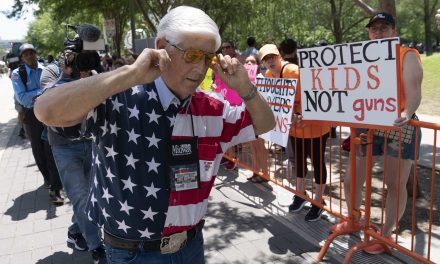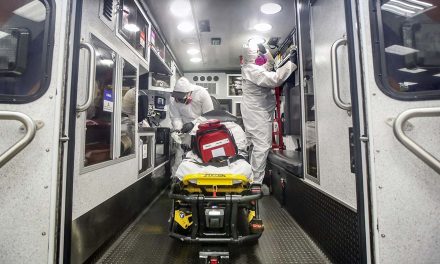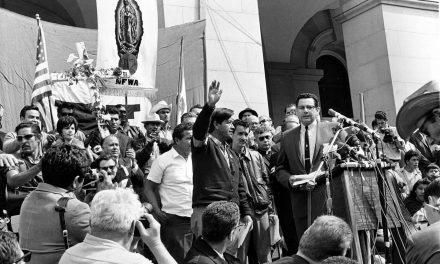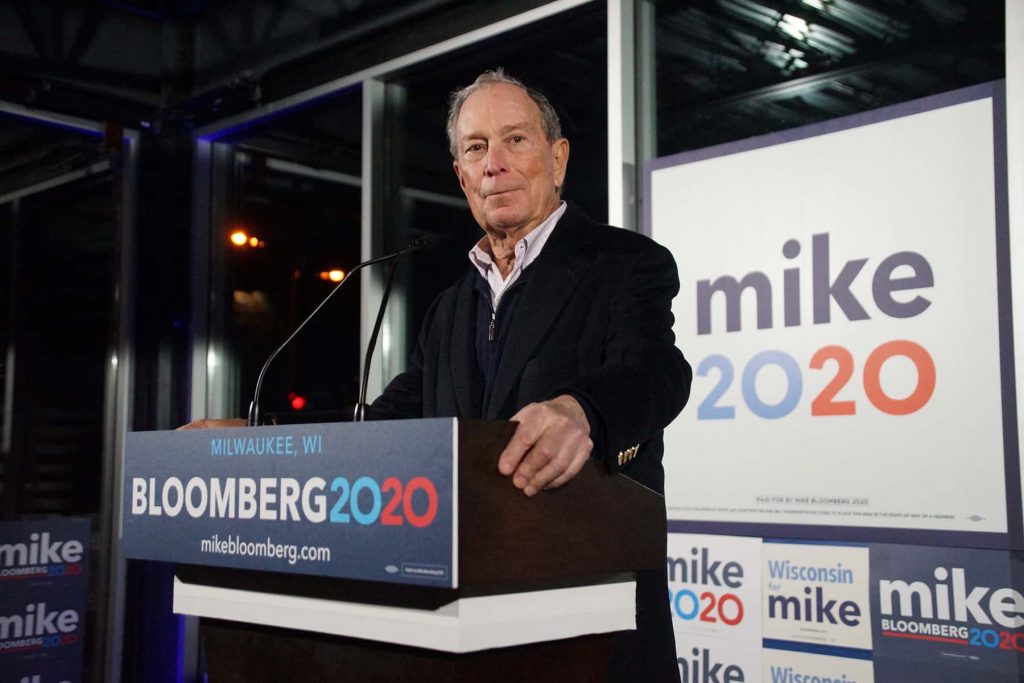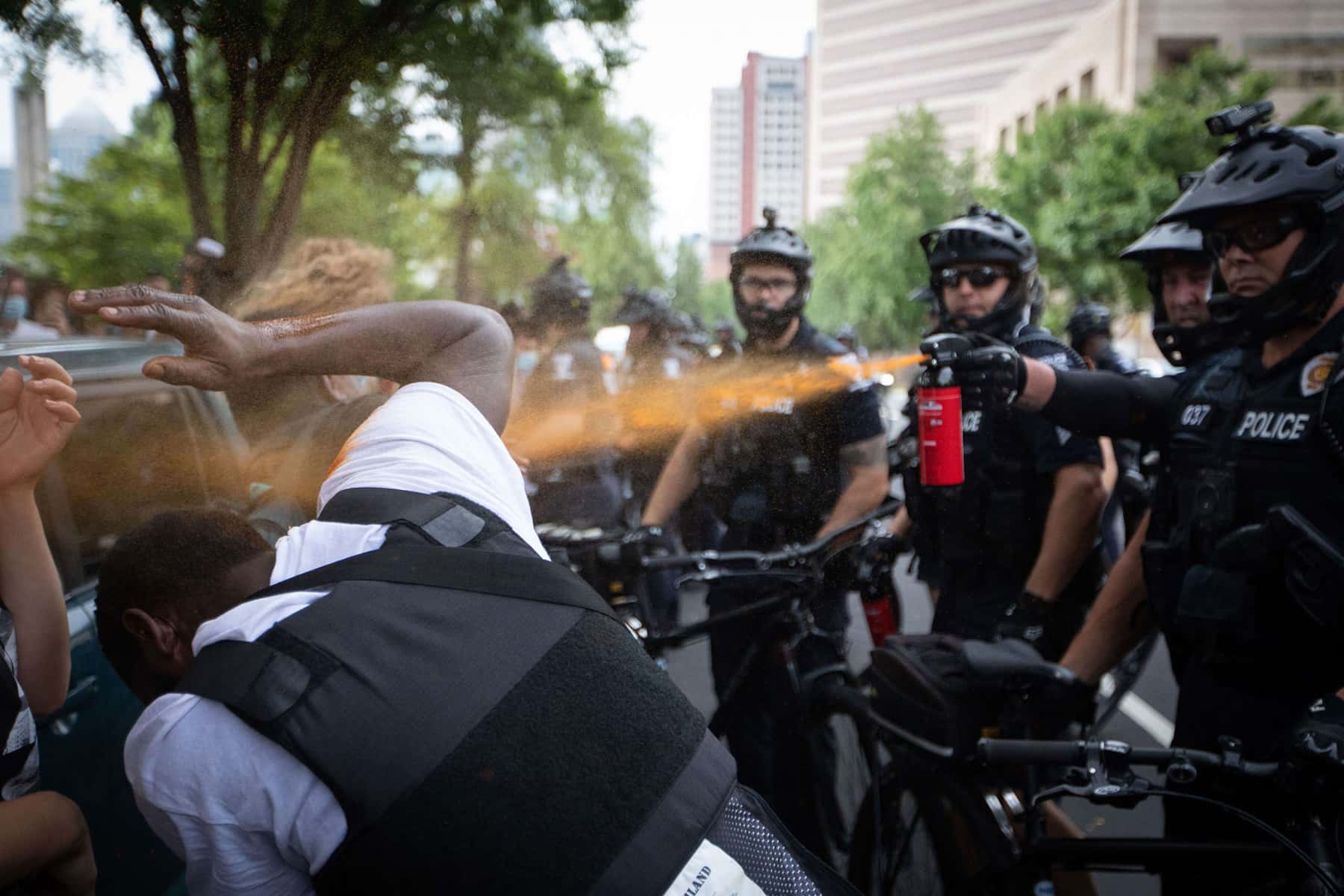
Police in the United States are three times more likely to use force against leftwing protesters than rightwing protesters, according to new data from a non-profit that monitors political violence around the world.
In the past 10 months, US law enforcement agencies have used teargas, pepper spray, rubber bullets, and beatings at a much higher percentage at Black Lives Matter demonstrations than at pro-Trump or other rightwing protests. Law enforcement officers were also more likely to use force against leftwing demonstrators, whether the protests remained peaceful or not.
The statistics, based on law enforcement responses to more than 13,000 protests across the United States since April 2020, show a clear disparity in how agencies have responded to the historic wave of Black Lives Matter protests against police violence, compared with demonstrations organized by Trump supporters.
Barack Obama highlighted an earlier version of these statistics on January 8, arguing that they provided a “useful frame of reference” for understanding Americans’ outrage over the failure of Capitol police to stop a mob of thousands of white Trump supporters from invading and looting the Capitol on 6 January, a response that prompted renewed scrutiny of the level of violence and aggression American police forces use against Black versus white Americans.
The new statistics come from the US Crisis Monitor, a database created this spring by researchers at Princeton and the Armed Conflict Location and Event Data project (ACLED), a nonprofit that has previously monitored civil unrest in the Middle East, Europe and Latin America.
The researchers found that the vast majority of the thousands of protests across the United States in the past year have been peaceful, and that most protests by both the left and the right were not met with any violent response by law enforcement.
Police used teargas, rubber bullets, beatings with batons and other force against demonstrators at 511 leftwing protests and 33 rightwing protests since April, according to updated data made public this week.
The Guardian compared the percentage of all demonstrations organized by leftwing and rightwing groups that resulted in the use of force by law enforcement. For leftwing demonstrations, that was about 4.7% of protests, while for rightwing demonstrations, it was about 1.4%, meaning law enforcement was about three times more likely to use force against leftwing versus rightwing protests.
ing protests than rightwing protests, with about 1.8% of peaceful leftwing protests and only half a percent of peaceful rightwing protests met with teargas, rubber bullets or other force from law enforcement.
“Police are not just engaging more because [leftwing protesters] are more violent. They’re engaging more even with peaceful protesters,” Dr Roudabeh Kishi, ACLED’s director of research and innovation, told the Guardian. “That’s the clear trend.”
ACLED’s data also shows that US law enforcement agencies were more likely to intervene in leftwing versus rightwing protests in general, and more likely to use force when they intervened. American law enforcement agencies made arrests or other interventions in 9% of the 10,863 Black Lives Matter and other leftwing protests between 1 April 2020 and 8 January, compared with only 4% of the 2,295 rightwing protests.
Half of the time police made any intervention into a leftwing protest, it involved using violent force, ACLED found, compared with only about a third of the time for rightwing protests.
Overall, 94% of the leftwing demonstrations in the past ten months were peaceful, compared with 96% of the rightwing demonstrations, according to ACLED’s most recently updated data. Kishi cautioned that the process of categorizing demonstrations as peaceful did not take into account whether demonstrators who engaged in violence or property damage were responding to aggressive or violent behavior from the police.
The US Crisis Monitor previously found that, despite Trump’s rhetoric and the intense media coverage of property damage or violence during protests this summer against police violence, more than 93% of Black Lives Matter protests since April had involved no harm to people or damage to property.
The majority of the protests ACLED categorized as leftwing were Black Lives Matter demonstrations, but also included pro-Biden demonstrations; protests by left-leaning groups such as Abolish Ice, the NAACP, or the Democratic Socialists of America; and protests associated with anti-fascists or left-leaning militia groups and street movements.
The rightwing protests included pro-Trump and pro-police demonstrations, including “Blue Lives Matter” rallies; rightwing protests against coronavirus public health restrictions; protests involving QAnon conspiracy theory supporters and others associated with the “Save Our Children” movement; and the “Stop the Steal” rallies promoting Trump’s false claims about his 2020 election loss.
Lоіs Bеckеtt
Mаrcіo Jоsé Sánchеz
Originally published on The Guardian as US police three times as likely to use force against leftwing protesters, data finds
Help deliver the independent journalism that the world needs, make a contribution of support to The Guardian.

